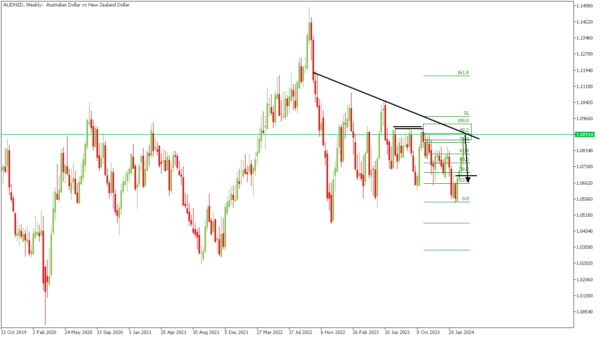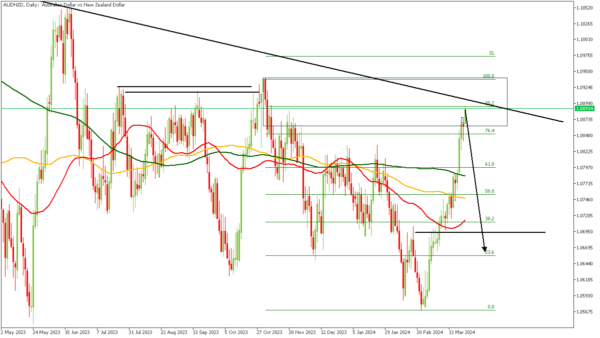The Australian Dollar (AUD) rebounds on Monday, despite a slight dip in the US Dollar (USD) and higher US Treasury yields. Investors are eyeing Australian monthly Consumer Price Index (CPI) data for February and US Gross Domestic Product (GDP) for Q4 2023. The AUD gains momentum as the ASX 200 Index rises, especially in mining and energy sectors. Additionally, the Aussie Dollar gets support from a stronger Chinese Yuan (CNY) as the People’s Bank of China (PBoC) sets the yuan’s mid-rate higher than expected. Meanwhile, the US Dollar Index (DXY) corrects after hitting a five-week high, possibly due to expectations of the Federal Reserve (Fed) easing cycle starting in June. Fed Chair Jerome Powell has downplayed inflation concerns, indicating a cautious approach to policy adjustments.
AUDNZD – W1 Timeframe
After breaking below the previous low on the weekly timeframe chart as shown above, we see price climb back up towards the 88% of the Fibonacci retracement; creating a QMR pattern – an even deeper confirmation for a price reversal.
AUDNZD – D1 Timeframe
Taking a closer look at the AUDNZD price action from the daily timeframe point of view shows even more clearly the QMR pattern as mentioned earlier. The bearish array of the moving averages indicates the likelihood of price to reverse from the supply zone. The presence of the trendline resistance lends even further confirmation to the bearish sentiment; making it my favourite trade idea of the week.
Analyst’s Expectations:
- Direction: Bearish
- Target: 1.06953
- Invalidation: 1.09432
CONCLUSION
The trading of CFDs comes at a risk. Thus, to succeed, you have to manage risks properly. To avoid costly mistakes while you look to trade these opportunities, be sure to do your due diligence and manage your risk appropriately.















